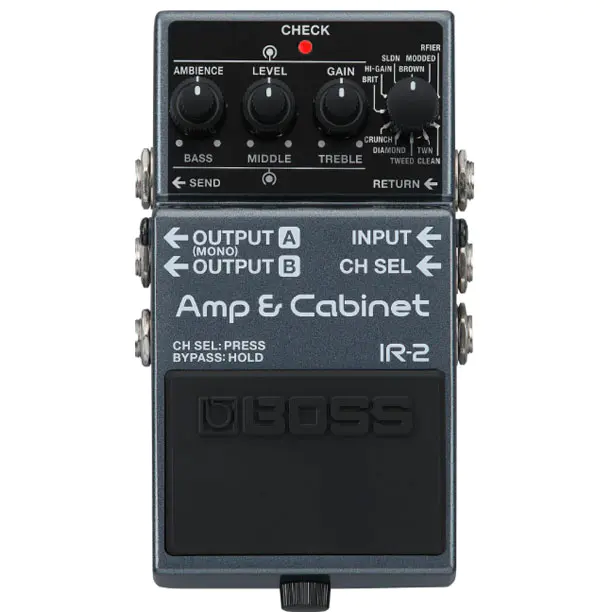
Although the first plugin emulating a guitar amp dates back to 1998 (Line 6’s Amp Farm, whose algorithms ended up in the Pod) amp and cab simulation is a category of effect pedals that has exploded in recent years, and Japanese giant BOSS hasn’t exactly been on the forefront of it. The new BOSS IR-2 promises to change that.
Hosted in the classic compact BOSS case format we all trust and love, the IR-2 is a compact version of the company IR-200 and, as far as we know, the first stereo device of this kind embedded in such a small enclosure.
Granted, it’s a lot simpler than many other devices in this niche, but it still manages to offer 11 amp emulations each paired with cab simulation curated by Celestion, plus the ability to load third-party IR files. Also, what’s not immediately clear is that, through the 3 concentric knob system, you get twice as many control as you may expect:
- a 3-way EQ section using the bottom half of the knobs
- respectively: Ambience, Level and Gain when you turn the top half
Here’s the list of amps:
- Clean: an original algorithm providing a full-range and natural-sounding clean tone.
- Twin: replicates the deep and colorful cleans of the Fender 2 x 12-inch combo.
- Tweed: modeled after a 4 x 10-inch combo from the 1950s.
- Diamond: emulates the chimey cleans and bite of the amp that defined the 1960s British invasion.
- Crunch: another BOSS original delivering gritty but lo-gain distortion.
- Brit: the unmissable Plexi tone.
- Hi-gain: dedicated to the loud rock enthusiasts.
- Sldn: a more flexible range of dirty tones inspired by a tube amp from the late 1980s that became synonymous with the slower and darker versions of metal.
- Brown: recycles an algorithm found in the BOSS Katana series, great for soaring leads.
- Modded: another original mode that sounds deep and high-gain.
- Rfier: Re-creates the dual-rectified tone of the Mesa Boogie line of amps.
Another useful feature of the pedal is that the stereo output can be used as n FX loop, allowing you to add all your favorite non-gain effects directly after the amplifier emulation section and before the cab one.
Also, the USB-C port lets you record directly to your DAW, while a headphones output is very handy for practicing in any environment. A Channel Selector output lets you connect a simple switch pedal to alternate between two amp/IR combos.
[Wanna get this baby and be supportive? Buy it through our Sweetwater or zZounds affiliate programs – at no extra cost.]






















